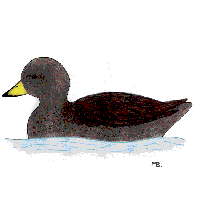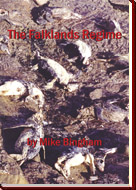 |
 |
| |
|
|
Speckled Teal Local Name: Yellow-billed Teal Breeding Range: Falkland Islands,
Chile and Argentina The Speckled Teal is the smallest of the Falkland ducks, being found throughout the Falklands in ponds, streams and creeks where it feeds on aquatic invertebrates and vegetation. Nesting begins in August, with 5 to 8 eggs being laid in a grass nest hidden close to the water. Two broods are common, with chicks fledging as late as April. Young take to the water and seek their own food at an early age, whilst still under the protection of the adults. Sexes are similar in appearance. The Speckled Teal may easily be confused with the larger and much less common Yellow-billed Pintail, but the Speckled Teal has a shorter neck, a more rapid flight, is less timid, and is often seen in small groups which the Pintail is not. |
|
|
||||||||||||||||||||||||||||




